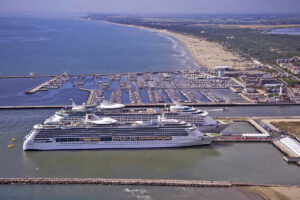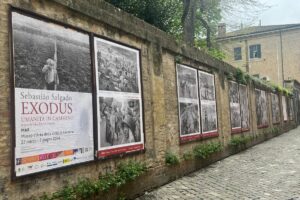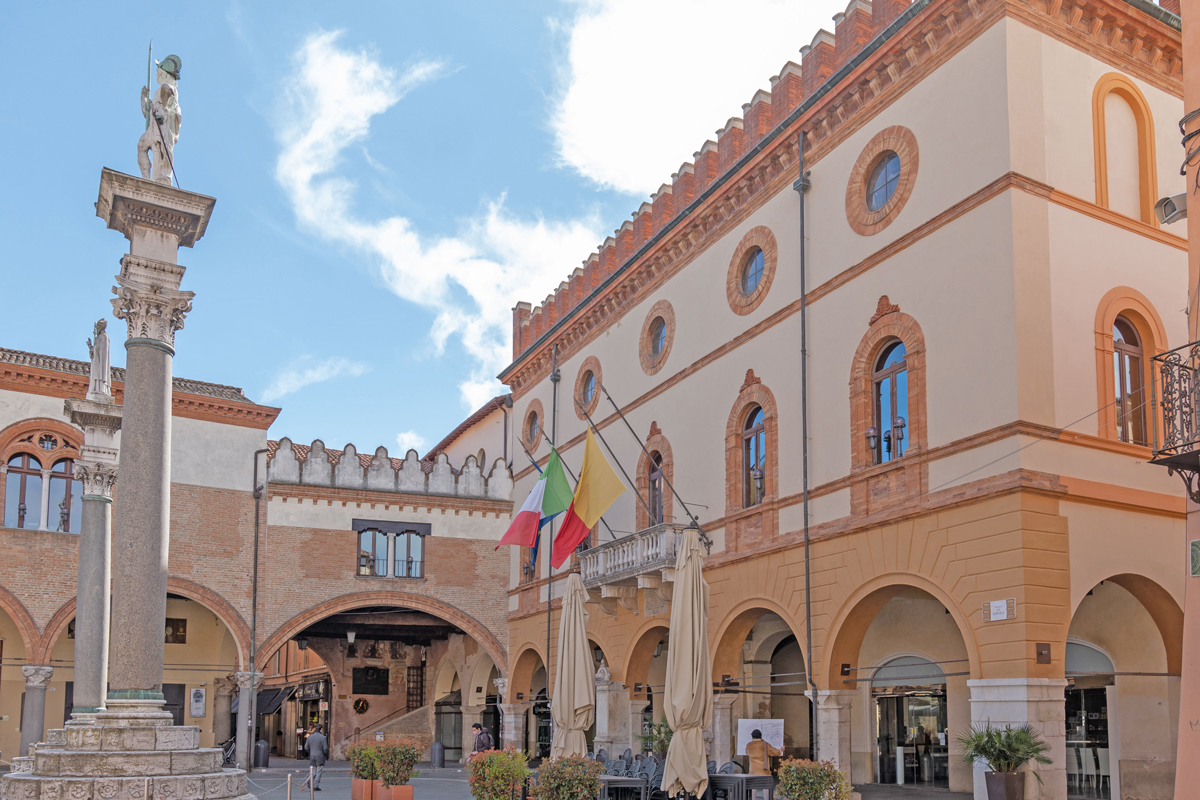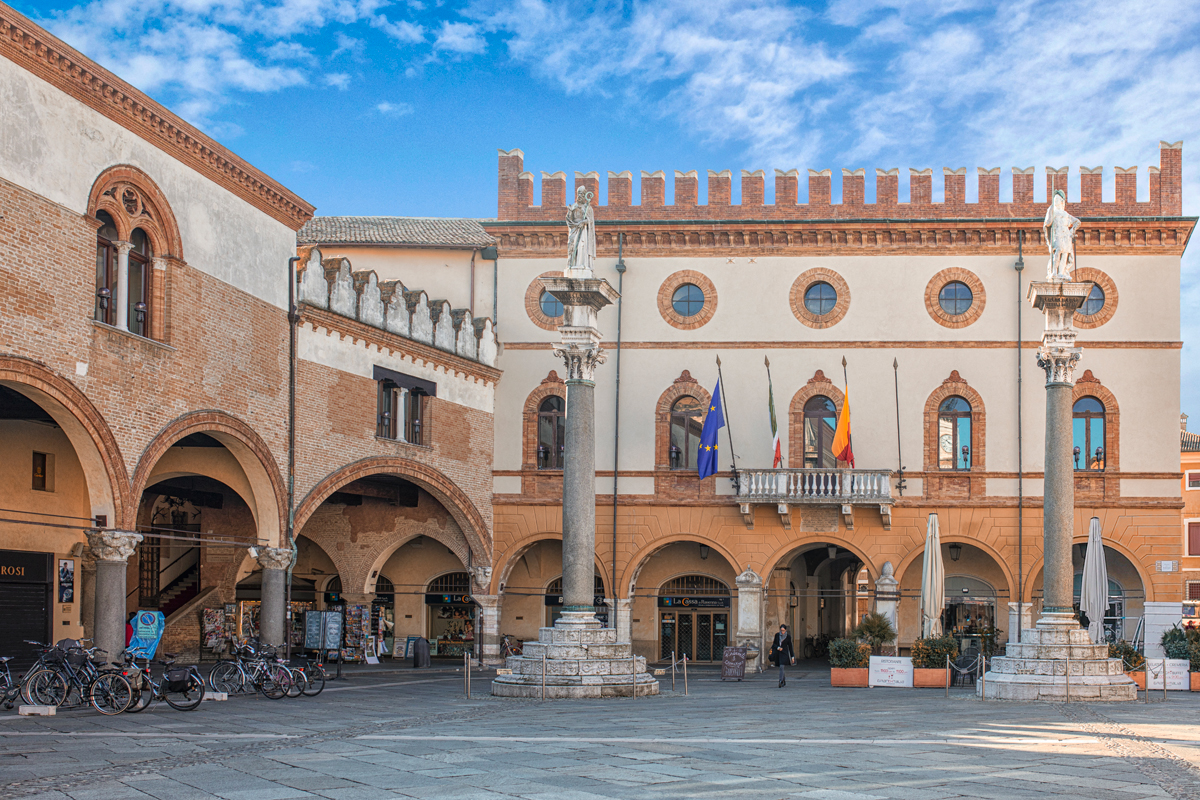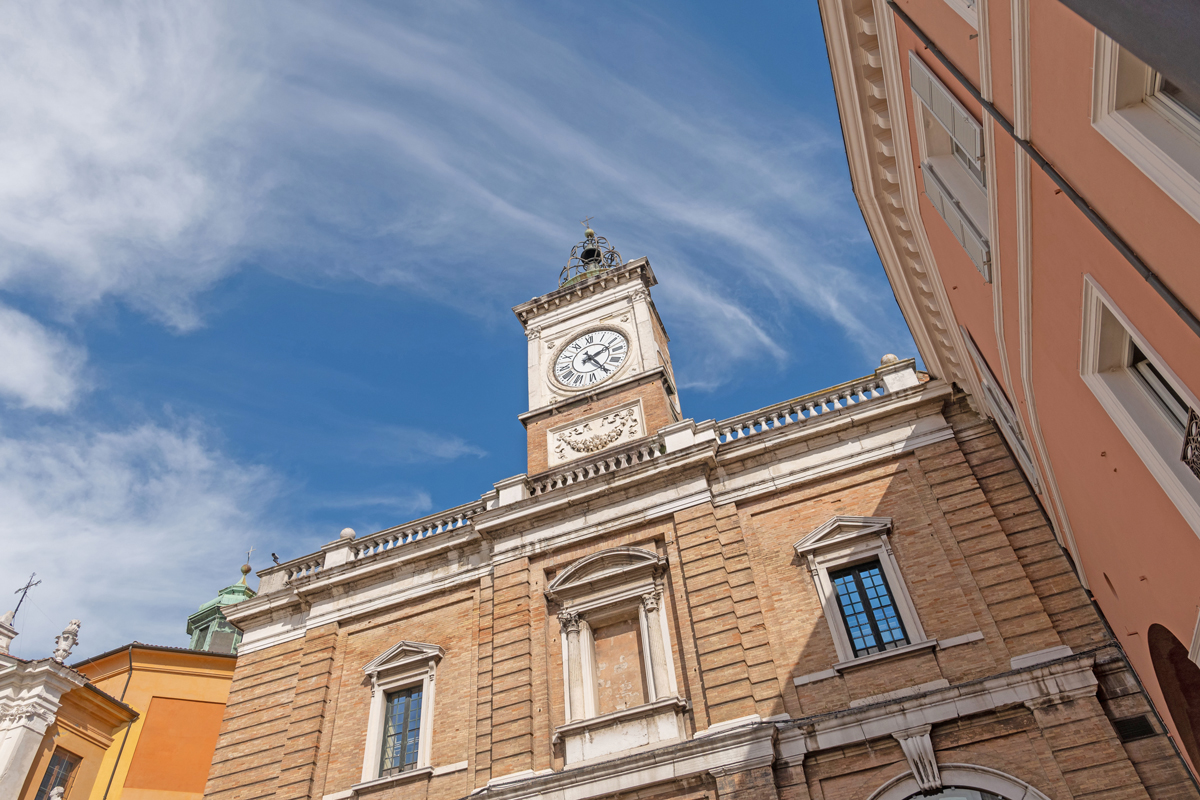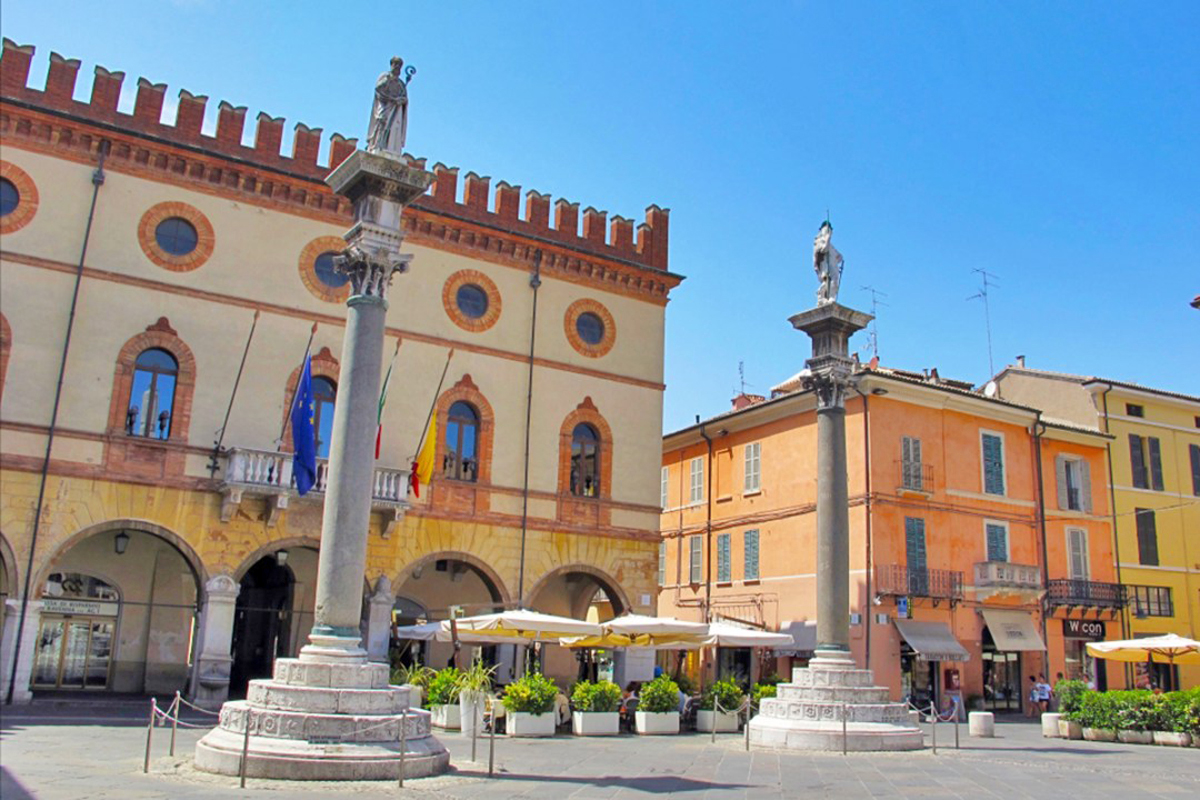PIAZZA DEL POPOLO is the beating heart of the city of Ravenna. For over seven centuries, it has been home to the palaces of power (the town hall and the prefecture building, once home to the Papal Legation) and a gathering place for all citizens.
Despite the passage of time, the look of the square is always lively at all times of the day thanks to its open-air cafés: it is the convergence point of many central streets and thus a key crossing point.
The origins of Piazza del Popolo
The origins of the square date back to the second half of the 13th century, a period when the Da Polenta family controlled the city.
The present dimensions of the square were defined in the years 1470-80, with the passage of Ravenna to the Venetians. What was initially a simple widening along the bank of the Padenna river was expanded, giving the square its current look.
Bernardino Da Polenta’s old town hall was then rebuilt on the occasion of the arrival of the first Venetian podestà, Vittore Delfino, and was later adorned with coats of arms, a stone balcony and terracotta ferrules in the arches.
The opposite side of the square, on the other hand, was enclosed by the facades of the churches of San Marco and San Sebastiano, which have now disappeared, thus representing all the characteristics of Venetian rule.
Following the example of Piazza San Marco in Venice – to delineate the border of the square – in 1483 two columns were placed on the side of the Padenna river (see focus). On the one closest to the palace was placed the lion of Saint Mark; on the other, the statue of the patron Saint Apollinaris.
In 1509, when Pope Julius II took possession of the city after the defeat of the Venetians at Ghiaia d’Adda, the insignia of the Serenissima were removed from the square: the lion on the column was replaced by the patron saint and the statue of San Vitale at his side.
The square, at first called Piazza del Comune and then Piazza Maggiore in Modern Age documents, was named after Vittorio Emanuele II after the proclamation of the Kingdom of Italy.
The current name of the square dates back to the institutional referendum of 1946, when over 88% of the people of Ravenna (the highest rate in Italy) voted in favour of the republic.
The buildings in the square
Over the last six centuries, the square has been enriched with other buildings that could serve the political power. The municipal building was completely rebuilt in 1681 and enlarged from 1761 onwards, until it assumed its current name Palazzo Merlato, as a seat of the municipal administration.
In 1696, Palazzo Apostolico – enlarged by order of the Cardinal Legate Francesco Barberini – was also completely renovated and today houses the Prefecture.
Other civic buildings in the square are also noteworthy, such as the former headquarters of the Banca Nazionale del Lavoro, designed by architect Camillo Morigia and connected to the prefecture by a large arch; and Palazzo dei Rasponi del Sale, today the headquarters of a banking institution.
On the ruins of the religious complex of the churches of San Marco and San Sebastiano stands Palazzo della Torre dell’Orologio (lit. palace of the clock tower), which first housed the central customs office (in 1798), then the first cinema (in 1907), and finally the first Casa del Fascio in Ravenna from 1928 to 1939.

